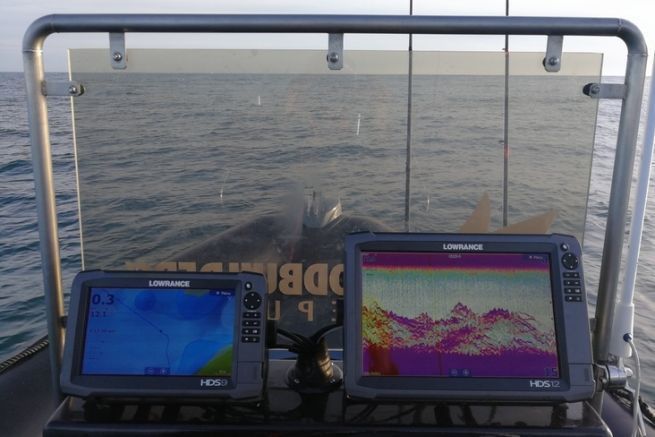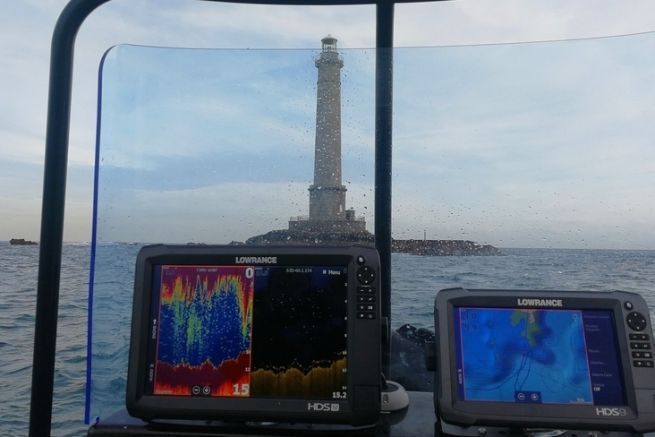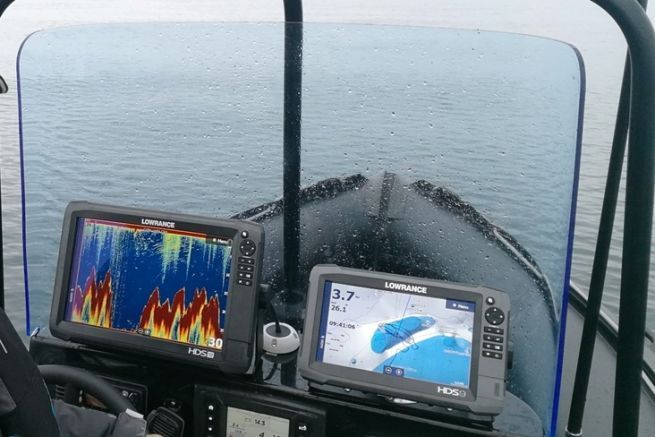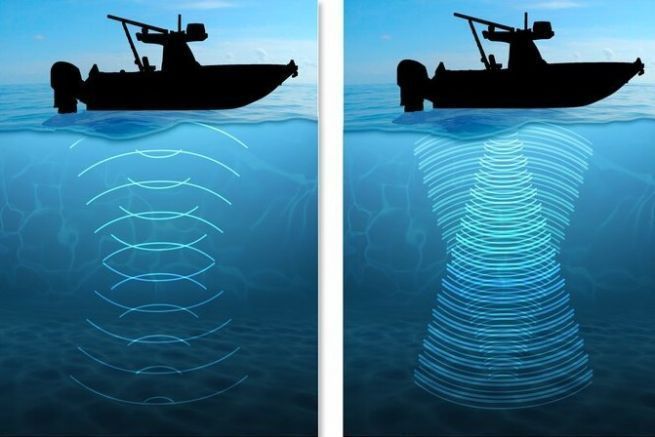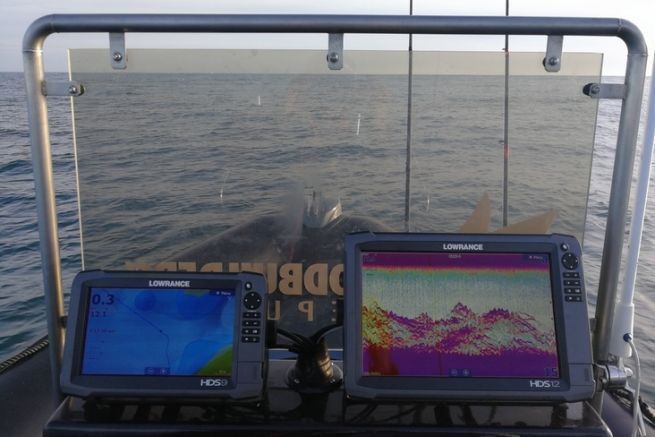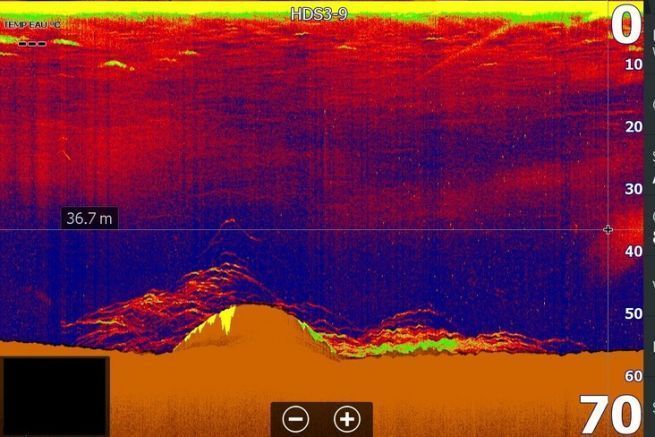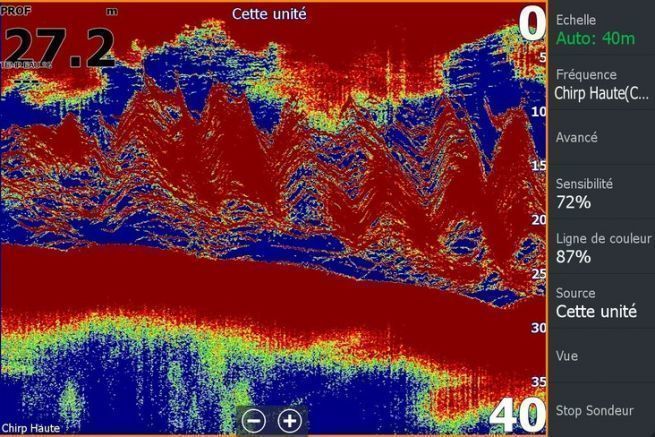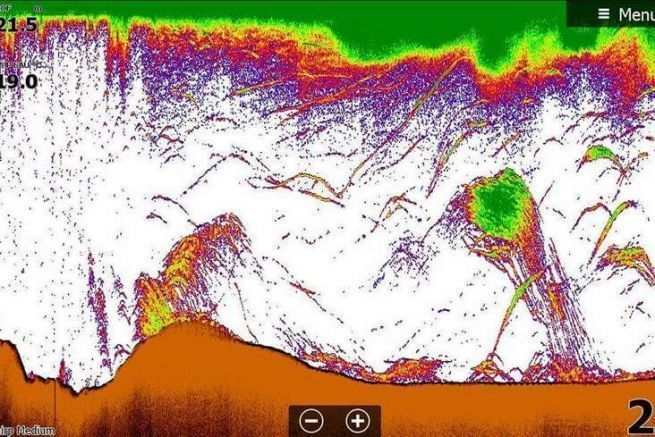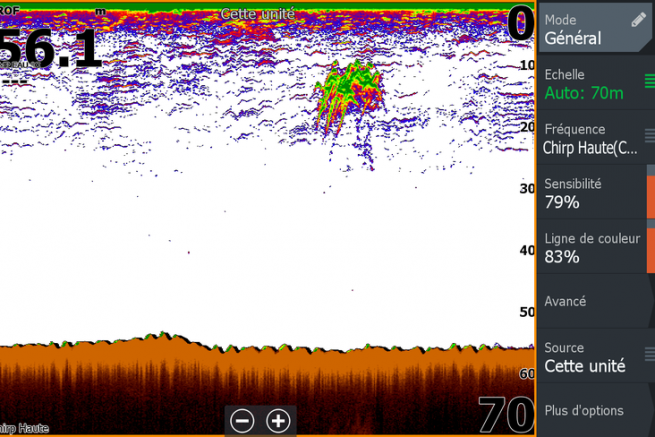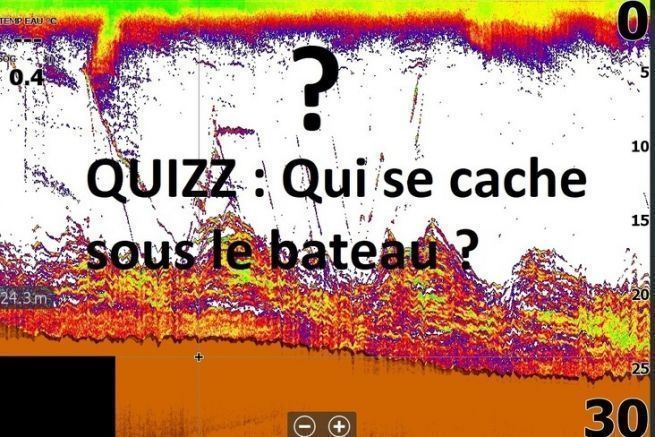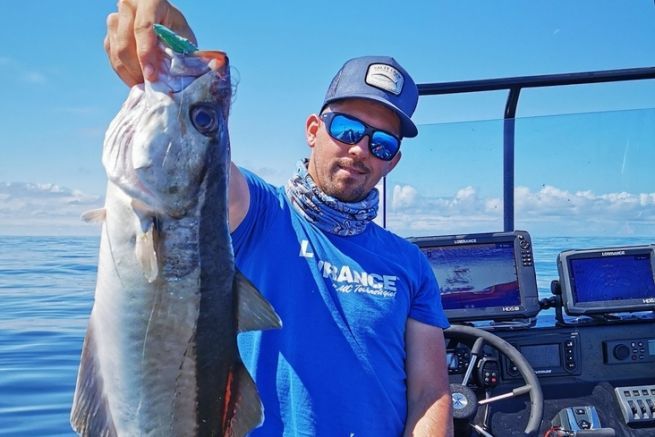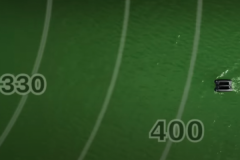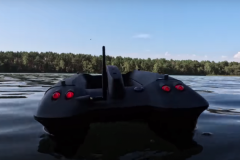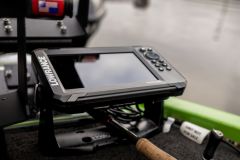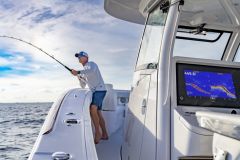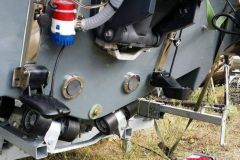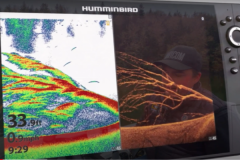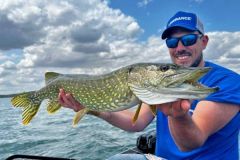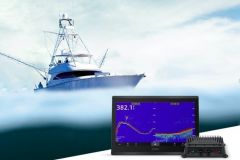For some users, a sonar unit is used only to indicate depth and navigate safely. This is true for the recreational fisherman who does not fish for pleasure. For us sport fishermen, this tool has become omnipresent, if not indispensable, on board RIBs and other boats.
Knowing how to read and understand the information transmitted by it requires mastering some basics that we will detail together.
A reading from right to left
Your sonar unit transmits an image of the bottom below your boat. On the screen, your boat's vertical is at the far right. Everything scrolled to the left is the area you've drifted or sailed over.
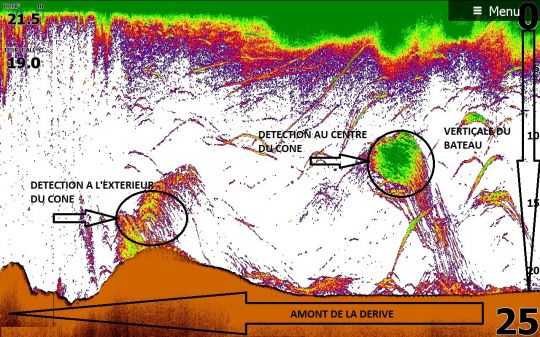
This capture is very rich and gives us a lot of information that we will detail later.
Top left, the depth under the boat, here 21.5m and the surface water temperature 19°C.
Other data are available such as heading, speed, etc. To display them, go to the settings of your device.
The colors of the detections
On your sonar unit, you can change the color scheme. This is a personal choice. Some anglers are more comfortable with one color scheme than another. Be aware, however, that depending on the color scheme you choose, the interpretation of echoes may vary if you switch to a new color scheme.
Below, 2 screenshots of the same bench of small bars with 2 different palettes.
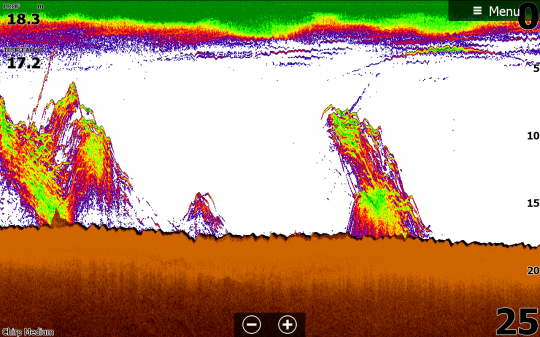
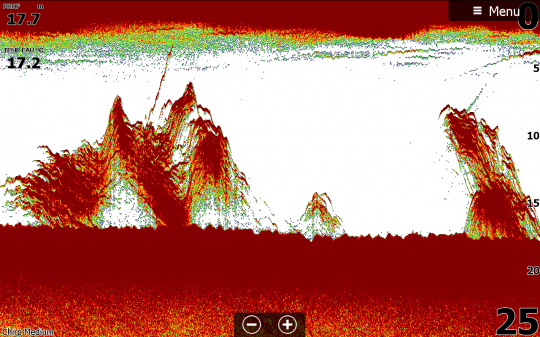
For the remainder of this section, I will use Lowrance's palette 13, the one I use most often. This palette has a color spectrum ranging from green for detections in the center of the detection cone, to blue for detections outside the cone.
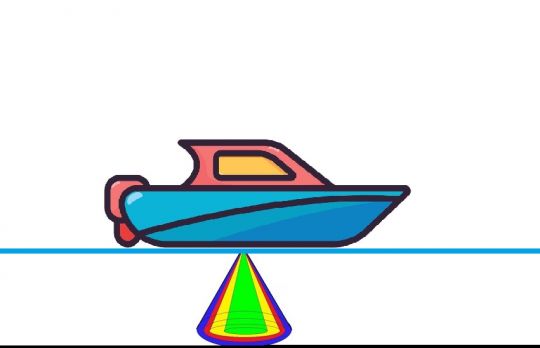
As a reminder, you can consult the article in which I explained the interest of knowing the size of the detection cone of your available probe HERE .
Taking the previous capture, 2 major detections stand out.

The first, on the right side of the screen, has a green cast, meaning it was right under the boat when it passed over. The technique of fishing vertically, in front of the boat, would have been the most judicious
On the other hand, the second one, more to the left, is essentially yellow in color which means that it was not vertical to the boat but on the sides. From the depth scale on the right side, I can tell that it was about 17m deep. Having a 200 kHz probe, I know that my detection range is about 1 third of the depth, which in this case is about 6 m. Even if the fish were not right under the boat, they were not far. A few quick casts, on the fly, may well trigger the attack despite everything.
If you want to know exactly which side it was on, the Side technology, presented in the first available article HERE will allow you to determine this.
The nature of the background
With your sonar, you can determine the nature of the bottom or at least its density. Again, depending on the color scheme you select, a hard bottom such as rock will be warm, while the softer the bottom (such as silt), the colder its color will be.
This knowledge will allow you to target certain species more than others such as sparids, often present on sand or gravel bottoms, sand eels, present mainly on sand. Depending on the season and the food present, predators are not located in the same places. At the beginning of the season, the bass, in search of sand eels, are often on the sandy areas. When sand eels are not present, they turn to a food composed of crabs and other small crustaceans. You will then find them on rocky areas.
Personally, to best determine the nature of the background I use Down or Side technologies which I find easier to interpret.
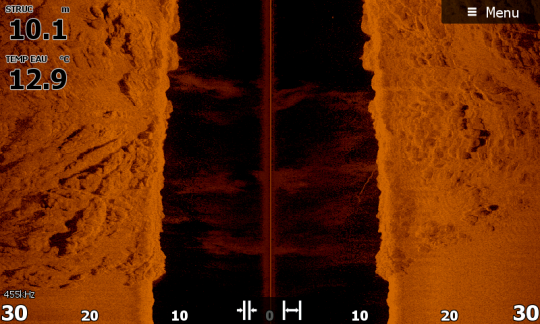
Fish echoes
Without a doubt, what interests fishermen the most!
Know that in a perfect world, a fish echo is materialized by a bow. Why is that? I invite you to browse through this article which deals specifically with the subject.
This arc image must be qualified. It's important to take into account the boat's displacement, the depth of detection and the angle of detection of your sonar. The size of the echo should also be considered in relation to the depth. The same fish, seen at two different depths, will not look the same on your screen simply because of the scale.
At first you will be able to determine if they are forage fish or predators. The forage fish is usually characterized by a fairly compact ball where it is difficult to discriminate the individual echoes. Conversely, detections of predator fish are often characterized by distinct arcs with a strong return when they are in the center of the detection cone.
With experience, you will identify the species.
On this capture dating from May 2020, a nice concentration of sea bass were located under the boat.
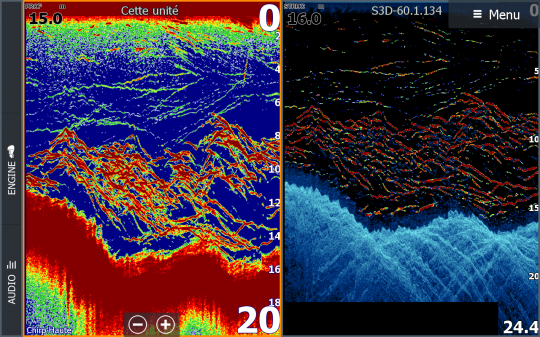
These dense, arc-shaped echoes in the middle of the water column indicate strong activity. The red color indicates a strong return of the sonar wave.
Know that in a fish, it is the swim bladder, filled with air, which causes the return of the echo. The bigger the fish, the more important it is and thus the echo will be important.
In the end we had several drifts where the fish were active.
